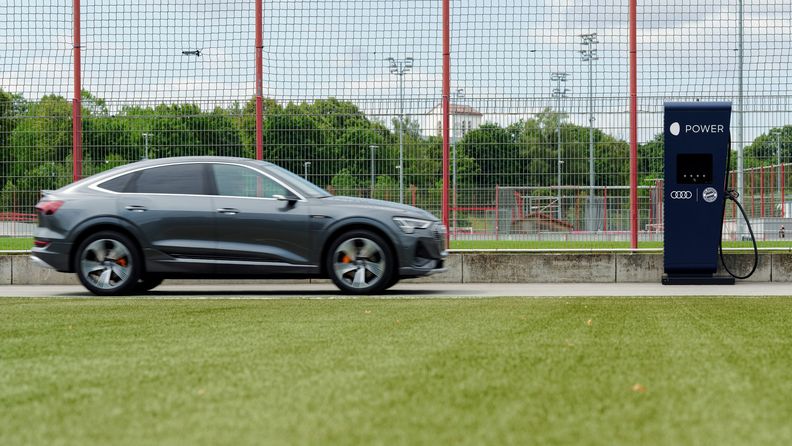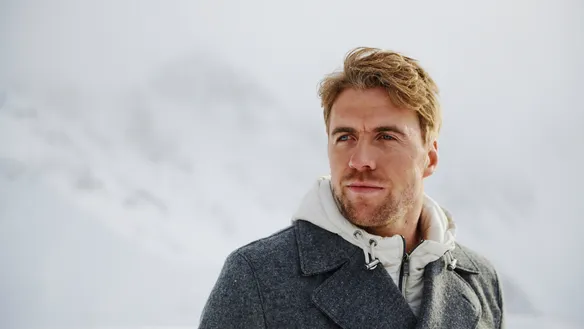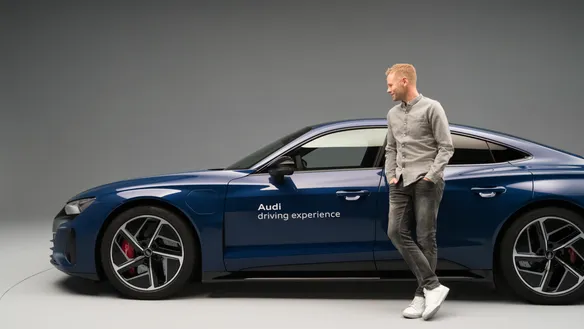Courage + confidence = success

Courage
It’s September 10, 2020 at exactly 9 minutes to seven in the evening. Peddling leisurely, Erik Fedko rides his slopestyle bike over level ground toward a steep drop into a quarry. As the ground falls away beneath him, he flicks the bike, turns his head to look back over his right shoulder and allows his body and the metal frame to follow its lead. After completing a 360-degree spin, Erik lands in the scree on the 30-degree incline. In the process, gravity accelerates his bike to reach “about 50 to 60 kilometers per hour” as he lands. Known as an opposite 360, this flip is just an appetizer for what’s to come.
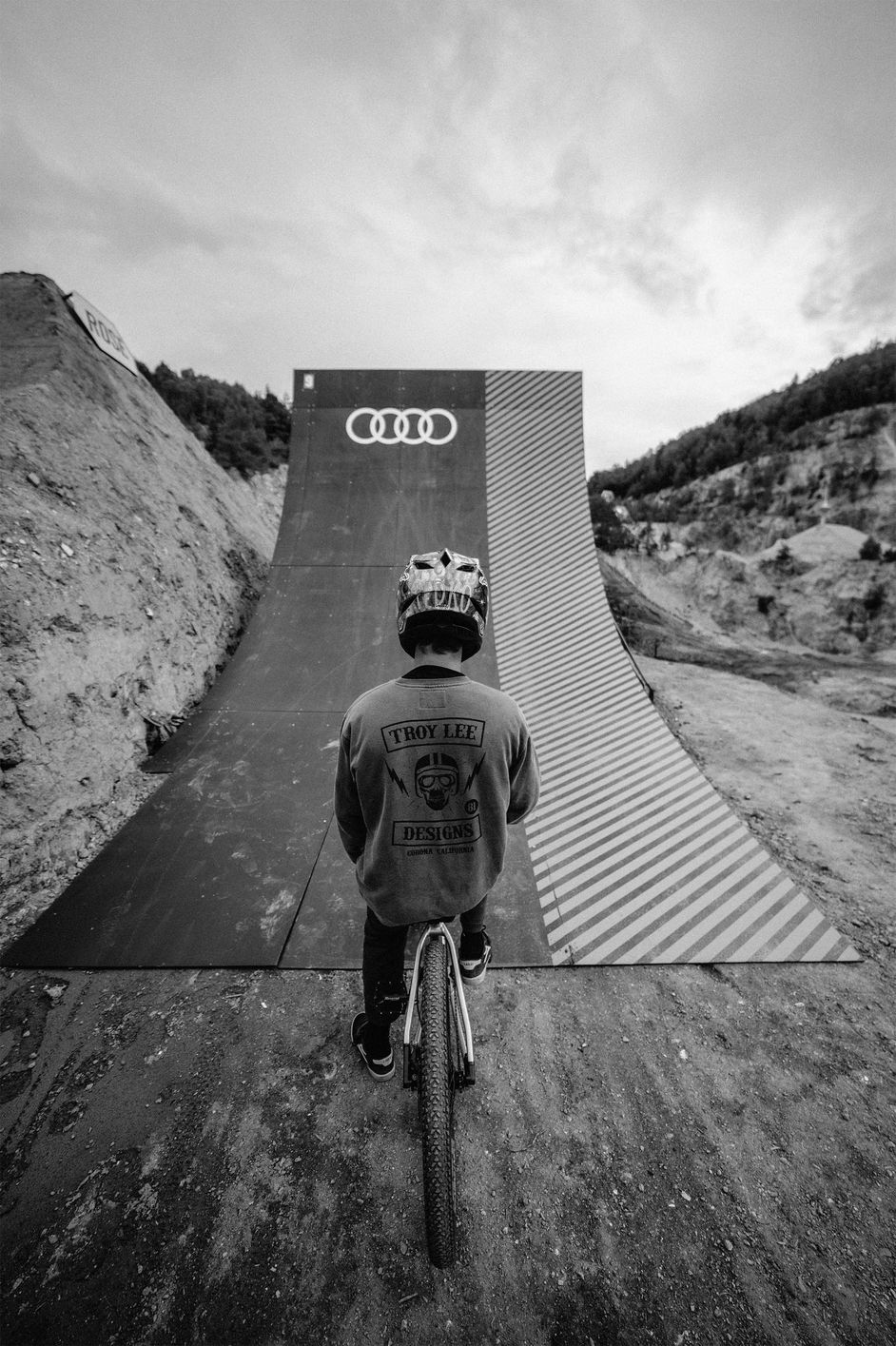
So his return to terra firma is also the leadup to Erik’s “One Shot,” a video sequence created as part of the Audi Nines presented by Falken in Birkenfeld, western Germany. What makes this “One Shot” so special is that Erik strings all the tricks seamlessly together as part of a single run. Filmed in one take; no cuts. What’s more, “One Shot” was filmed from inside an Audi e-tron (see the video below). This can’t be emphasized enough because riders often reattempt individual jumps until they pull them off flawlessly and then the jumps are edited and strung together into a sequence.
Erik heads into the first ramp at full speed. While airborne, he does a 450 tailwhip—rotating the bike freely beneath him as his body completes a full backward rotation. Landing like a cat, he freewheels casually over the log jump and shreds a 360 downside tailwhip. On the next 4.50-meter-high quarter pipe, Erik executes a 540 triple barspin in style.
From there, he pumps the pedals four times to get up to speed as he hits the step-down jump and launches into a backflip tailwhip—a backward somersault where he again spins the bike frame beneath his body while in mid-air. He carries the accumulated speed smoothly into the run’s final jump: a 360 barspin to tailwhip to barspin, marking a world first. A mere thirty-six seconds after his first jump, Erik lands the last in this string of highly challenging stunts before letting his bike roll to a stop.
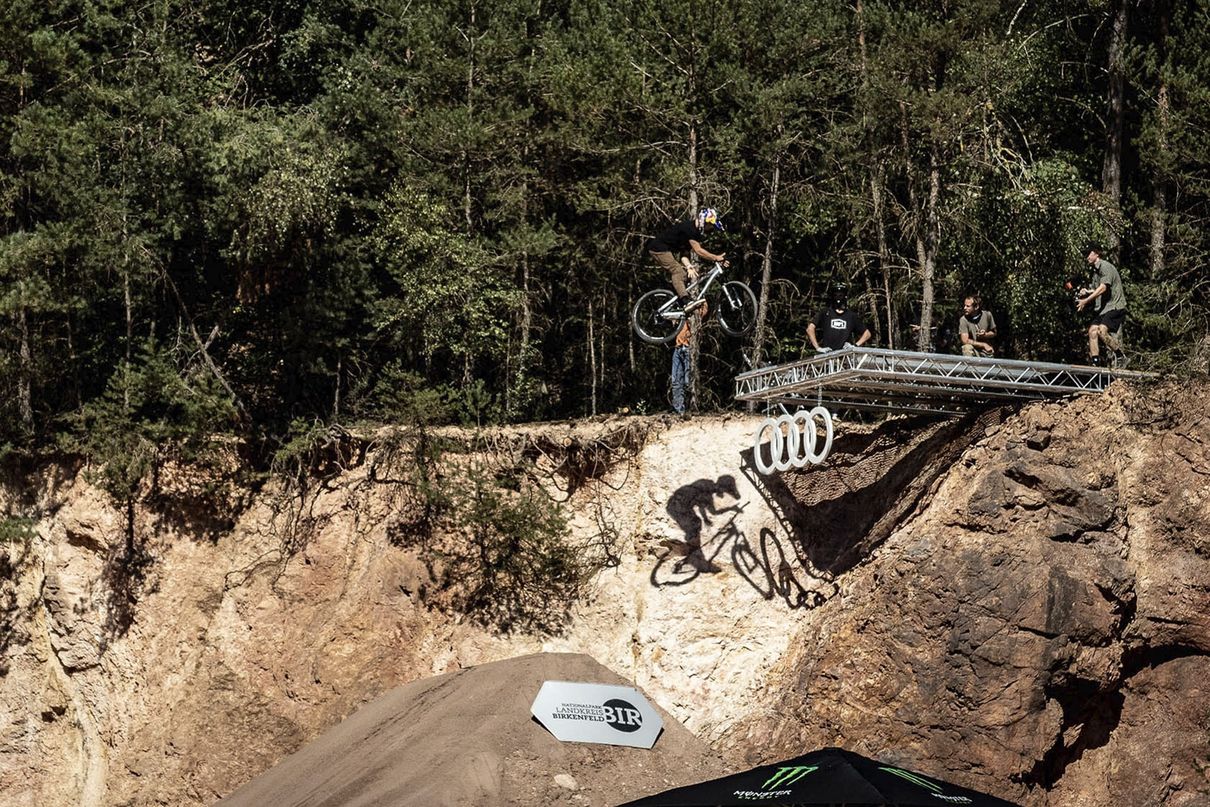
Reviewing his performance later, he says of the trick repertoire seen in the video: “I came pretty close to the edge of what I’m capable of. I’d give it a 9.5 out of 10 on the difficulty scale. That last jump especially is the most difficult but it’s also my favorite in my bag of tricks. No other rider does it, and I have to pluck up courage every time I go for it because it requires a lot of time in the air.”
This daredevil, go-getting attitude to slopestyle shredding has propelled Erik Fedko to his current success. He is ranked fourth on the Freeride Mountain Bike World Tour. Born in 1998, Erik hasn’t been on the pro biking circuit for very long, although it was pretty clear from his childhood that this is where he was headed. He received a motocross bike for his eighth birthday. The fact that he happened to “ride his bicycle through the forest” was merely incidental. Four years later, he had an accident in a motocross race and his parents decided that the motorbike had to go. So Erik switched over to a BMX. Today he rides and competes with slopestyle and freeride bikes.
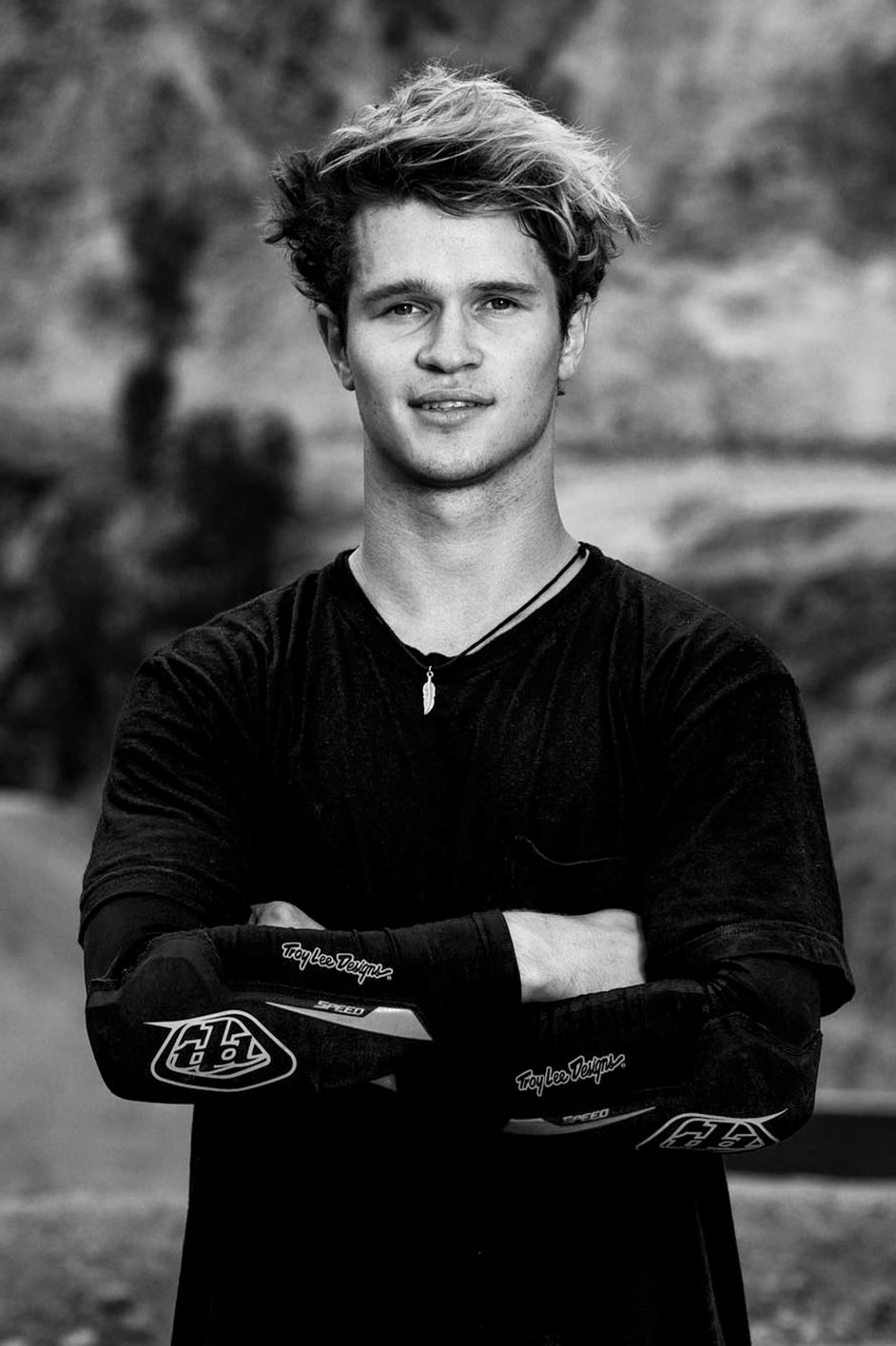
Confidence
Right from his first full season on the pro circuit in 2018, he succeeded in earning his first podium finish—third place at a Diamond level event, Crankworx in Les Gets, France. Just like that, he burst onto the scene as one of the best in the world, casually bagging the Crankworx World Tour Rookie of the Year title.
As early as the following year, he started feeling the pressure. “For the first time, I had big sponsors. That was new to me. I was very aware that everyone was rooting for me and I had to deliver.” Red Bull has hailed him as arguably the most promising German talent in the MTB arena. Feeling the glare of the spotlight, Erik “only”—to use his word—achieved fifth and seventh places, no podium finishes.
“I had to get away from thinking like that and change my mindset. As banal as it sounds, I had to start enjoying being on a bike again, doing my thing and showing off what I’d been working on over the winter season.”
“
Right now, Erik is at that magical point in his career where he’s invincible”
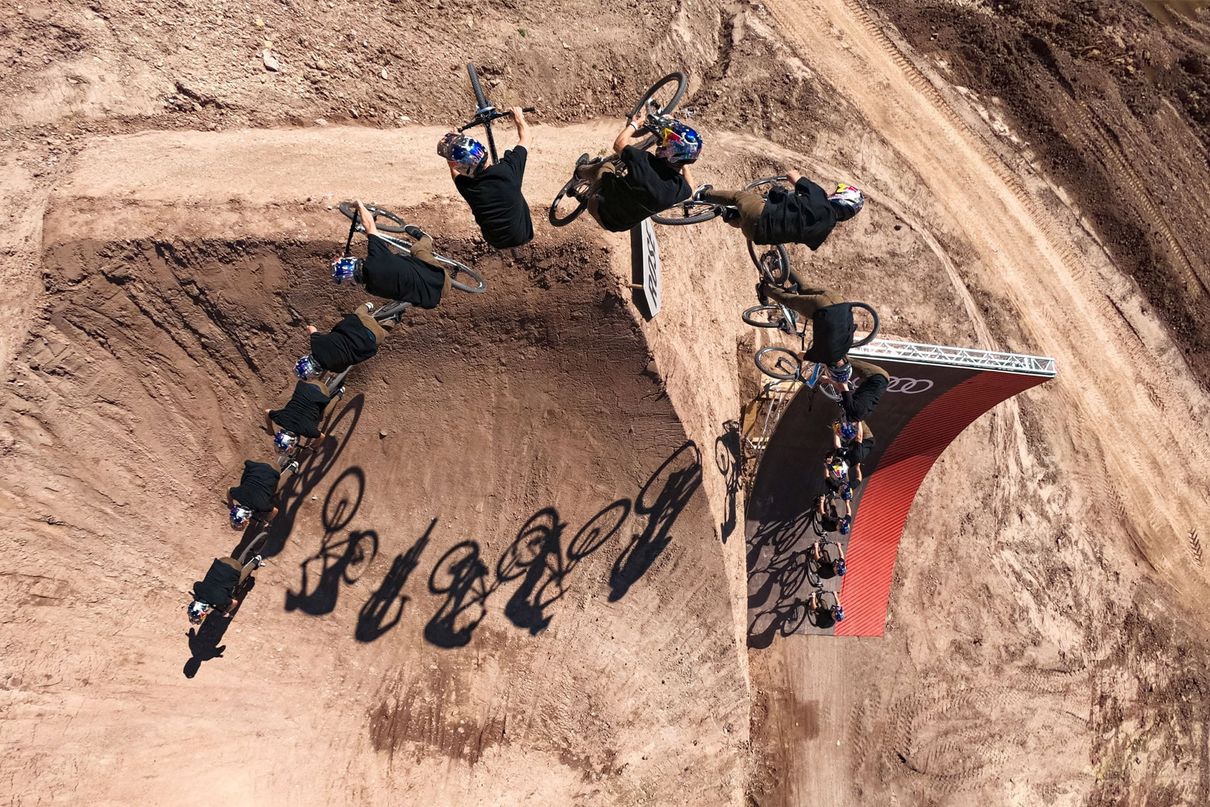
For Erik, that meant riding, riding and riding some more. Hitting the jumps, again and again. At his private training ground, 20 minutes from his home in Fröndenberg near Dortmund in Germany, Erik spent more time in the saddle than ever before, practicing jumps and building his confidence. There, he not only builds the ramps, hills and landings exactly the way he wants them but also set up an airbag so that he can land safely even when he eats it. “I only think of moving across to the ramps with soft bark mulch landings once I’m landing a trick safely on the airbag. And only when I’m nailing it there is it time for the real thing.”
None of that happens on the bike before Erik has got each trick’s choreography perfectly visualized and committed to memory. “With every single trick, you have to know exactly what you’re doing from one millisecond to the next throughout the flight path. That means, I have to hammer the entire sequence of each trick or course into my head.”
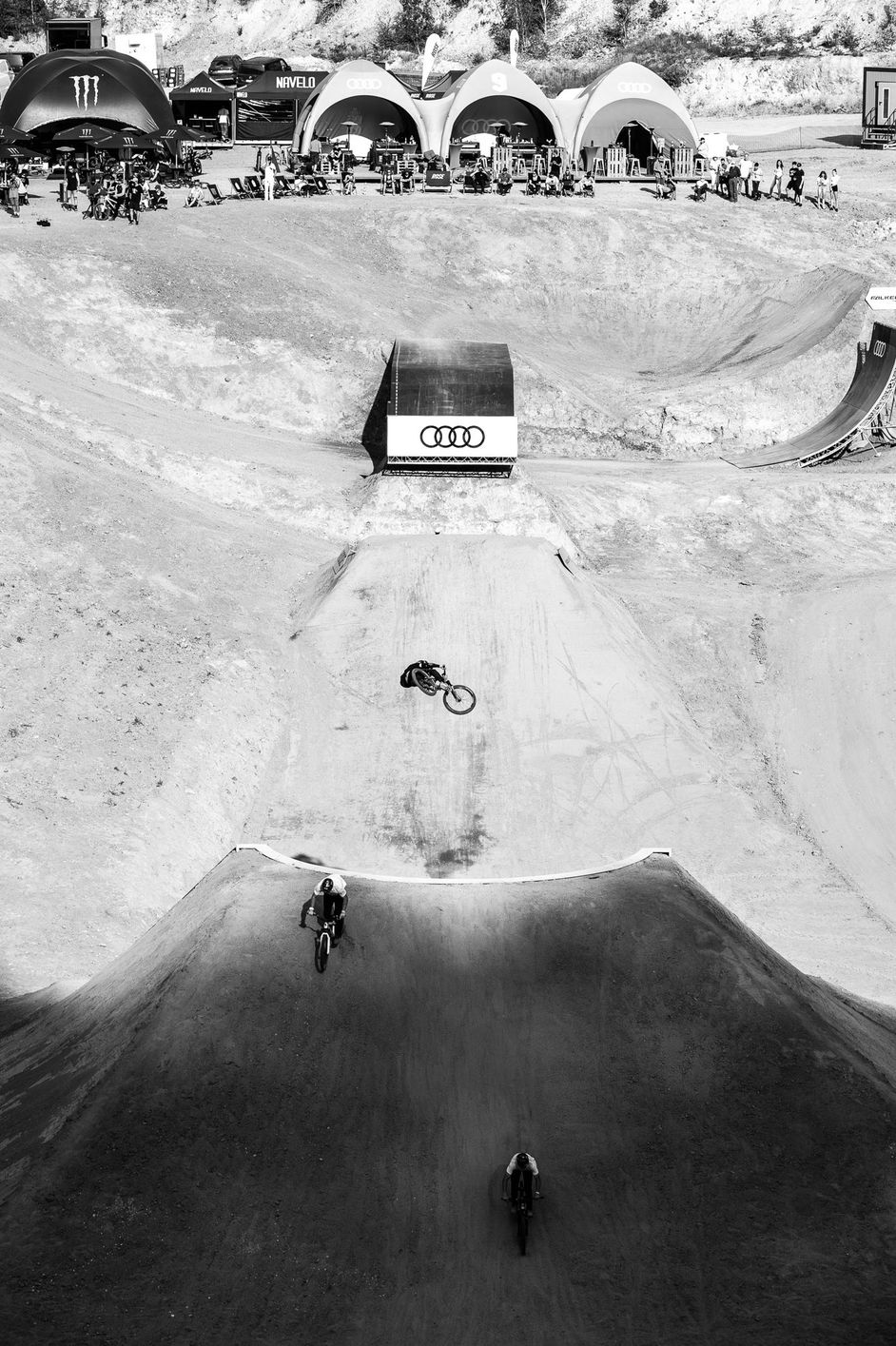
Success
It’s this mental fortitude that fueled Erik’s return to success in 2020. “During competitions, I was able to block out that feeling that I absolutely have to deliver the goods. I have faith in myself at the moment because I know I can do it, I’ve trained enough and I want to strut my stuff.” When you don’t feel you have to, anything is possible.
Audi Nines founder and organizer, Nico Zacek, himself a former freeski pro, has watched Erik go through this transformation: “He’s done an incredible amount of riding this year, putting in four to five hours every day. But it doesn’t feel like hard work to him; he sees it more as hanging out with his buddies. Right now, Erik is at that magical point in his career where he’s just awesomely good and invincible. He’s young and all he thinks about every second of the day is riding a bike, nothing else. While he’s totally focused, he’s also got a light touch. And that gives him confidence.”
But there’s more because, even more so than in competition, video performances are all about style. In other words, it’s not enough to just focus on the tricks and perform the entire run as flawlessly as possible. Or to stand calmly at the start of a competition run, take a deep breath and let go of the pressure and all those expectations. Or even to have the drive to be the best. Instead, you have to internalize self-belief and courage. And you have to do it in such a way that it not only translates into success, but also makes everything you’re capable of and eager to express as an athlete on a bike look playful, effortless, easy, fascinating—yes, fluid. And to make sure that magical feeling athletes get after a perfect run can be felt by viewers, too, just watching the video of it.
So how did Erik pull it off in the “One Shot” clip? Nico Zacek thinks the answer is simple: “For a lot of other riders, it’s a hard grind. It just flows with Erik because that’s Erik. He eats, sleeps and breathes slopestyle.”
Audi e-tron: Power consumption (combined) in kWh/100 km: 26.1–21.7CO₂ emissions (combined) in g/km: 0CO₂ emission class: A
Audi e-tron: Power consumption (combined) in kWh/100 km: 26.1–21.7CO₂ emissions (combined) in g/km: 0CO₂ emission class: A
